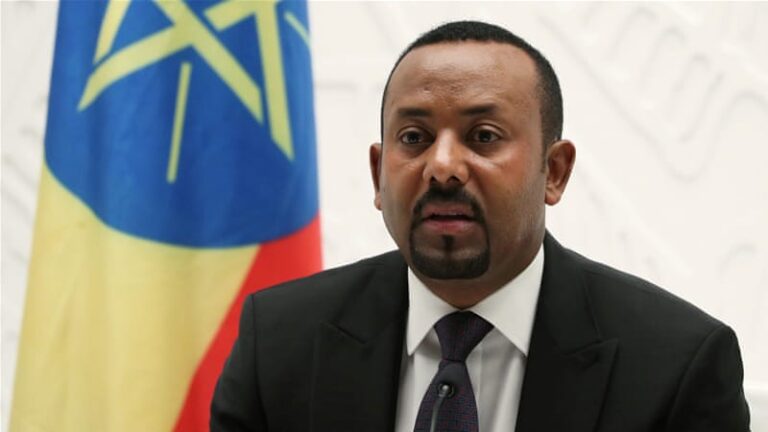Ethiopia announced that it found traditional medicine for covid 19
Ministry of Innovation and Technology, Ministry of Health and traditional medicinal practitioners announced that they have approved a traditional medicine that was tested on humans and animals since the covid 19 outbreak was in December 2019.
Abraham Belay, Minister of Innovation and Technology, told Capital via text message that the country traditional medicine experts developed the medication for the virus that has not yet have official medication all over the world.
Ethiopia announced that it found traditional medicine for covid 19
Statement from Prime Minister’s Office
Prime Minister Abiy Ahmed held a virtual meeting with the COVID-19 Ministerial Committee to discuss progress and provide additional direction and measures in the prevention and containment COVID-19. Considering that the number of positive cases has increased to a total of 16 as at March 27, 2020 and to ensure that these numbers do not increase exponentially, the Federal government has been taking heightened precautions to ensure that enough preventative measures have been taken. Following discussions held, Prime Minister Abiy Ahmed announced the following additional key measures and calls for action:
1. As of this afternoon, recent arrivals to Addis Ababa who cannot afford to be quarantined in the various hotels identified, will be transferred to Adama Science and Technology University (ASTU) for the 15 days mandatory quarantine period upon arrival.
2. Two-week extension of school closures as of today, including higher learning institutions.
3. Strict adherence to social distancing protocols is expected within market areas and religious establishments. The Federal Government has been granted a constitutional mandate to halt religious gatherings in times of grave national emergencies. But before enacting these constitutional measures, it once again appeals to all citizens that they are practicing social distancing protocols.
4. Calls upon all retired and in-training medical professionals to prepare for national duty if the situation warrants such extra support.
5. More than 134 facilities have been identified for quarantine, isolation and treatment but with varying levels of equipment. Therefore, the government calls upon all citizens to strengthen the efforts of the national resource mobilization committee which is in the process of finding materials like beds, mattresses, bed sheets, ventilators and other medical and non-medical supplies.
6. The macro-economic sub-committee has been undertaking dialogue with key industry stakeholders in various sectors to craft a way forward in safeguarding the economy. As a result, the following measures will also be undertaken to stabilize the economy: a. Tax exemption for the import of materials and equipment to be used in the prevention and containment of #COVID-19. b. National Bank of Ethiopia to avail Birr 15 billion liquidity for private banks to enable them to provide debt relief and additional loans to their customers in need. c. Banks to avail foreign currency for importers primarily importing goods and input materials for the prevention of #COVID-19. d. Commercial Bank of Ethiopia to increase the amount of money individuals can transfer through mobile banking, to limit in-person cash handling e. Removal of the minimum price set by the National Bank of Ethiopia on the horticulture sector for flower exports f. The Ministry of Revenue to expedite VAT returns to support companies with cash flows g. The Ministry of Trade and Industry to continue strengthening the measures it is undertaking to control price increments and supply shortages of consumer goods
Why are mobile livescores so relevant today?
A growing number of basketball fans use mobile devices to check the results of matches of their favourite team. This is due to the fact that mobile livescores can be received at any convenient place, which greatly simplifies the monitoring process. It can be either a crowded street or a train ride. It all depends on the speed of the Internet and the desire of a user.
Due to the demand for such software, many companies are developing their own applications. For example, Azscore has long been offering fans to use the mobile version, which has the same functionality as the official site.
The main advantages of the application by the company include:
- The ability to find out information about any match in two or three clicks. The process doesn’t take more than 20 seconds;
- The functionality is completely similar to the official site of the project;
- Thanks to the company’s website, you can find out not only the results but also the performance and strategy of the teams during matches;
- The line of sports matches available in the mobile version is not limited to football. This are more than 30 sports, for the majority of which there are text translation available online.
Don’t forget that to date, many leagues in the world have suspended their activities due to the spread of the coronavirus COVID-19. The same applies to the NBA matches, because several league players at once had positive test results.
Despite this fact, mobile livescores will be available to users immediately after the resumption of the regular season. So far, the system shows an alert about the games being postponed.
Why is Azscore.com the best resource for analysing the NBA games?
The main surprise of the season was the failure of the Golden State Warriors. Indeed, despite the injuries of Curry and Thompson, as well as the transfer of Durant and Cousins to other teams, many expected that the youth of the team would be able to make it to the playoffs. However, going to the club’s page on the Azscore.com platform, you will see a huge number of defeats during the season.
By the time the championship stopped, the team has the worst score in the whole league, which has 30 teams. Unfortunately, the strong basketball players in the roster, namely Green and Russell, and later Wiggins, didn’t help the team get the desired percentage of victories.
Stefan’s return for the rest of the season will not help Kerr’s team to get the long-awaited promotion further. However, most likely, the team will receive the first pick of the draft for the next season due to its low place, and therefore, after the leaders return, they will perform with renewed strength.
Every fan of the club will be able to watch the victories of Curry and his teammates thanks to the Azscore.com service, available 24-hours a day.
COVID-19 has exposed the fragility of our economies
The human dimensions of the COVID-19 pandemic reach far beyond the critical health response. All aspects of our future will be affected – economic, social and developmental. Our response must be urgent, coordinated and on a global scale, and should immediately deliver help to those most in need.
From workplaces, to enterprises, to national and global economies, getting this right is predicated on social dialogue between governments and those on the front line – the employers and workers. So that the 2020s don’t become a re-run of the 1930s.
ILO estimates are that as many as 25 million people could become unemployed, with a loss of workers’ income of as much as USD 3.4 trillion. However, it is already becoming clear that these numbers may underestimate the magnitude of the impact.
This pandemic has mercilessly exposed the deep faultlines in our labour markets. Enterprises of all sizes have already stopped operations, cut working hours and laid off staff. Many are teetering on the brink of collapse as shops and restaurants close, flights and hotel bookings are cancelled, and businesses shift to remote working. Often the first to lose their jobs are those whose employment was already precarious – sales clerks, waiters, kitchen staff, baggage handlers and cleaners.
In a world where only one in five people are eligible for unemployment benefits, layoffs spell catastrophe for millions of families. Because paid sick leave is not available to many carers and delivery workers – those we all now rely on – they are often under pressure to continue working even if they are ill. In the developing world, piece-rate workers, day labourers and informal traders may be similarly pressured by the need to put food on the table. We will all suffer because of this. It will not only increase the spread of the virus but in the longer-term dramatically amplify cycles of poverty and inequality.
We have a chance to save millions of jobs and enterprises, if governments act decisively to ensure business continuity, prevent layoffs and protect vulnerable workers. We should have no doubt that the decisions they take today will determine the health of our societies and economies for years to come.
Unprecedented, expansionary fiscal and monetary policies are essential to prevent the current headlong downturn from becoming a prolonged recession. We must make sure that people have enough money in their pockets to make it to the end of the week – and the next. This means ensuring that enterprises — the source of income for millions of workers — can remain afloat during the sharp downturn and so are positioned to restart as soon as conditions allow. In particular, tailored measures will be needed for the most vulnerable workers, including the self-employed, part-time workers and those in temporary employment, who may not qualify for unemployment or health insurance and who are harder to reach.
As governments try to flatten the upward curve of infection, we need special measures to protect the millions of health and care workers (most of them women) who risk their own health for us every day. Truckers and seafarers, who deliver medical equipment and other essentials, must be adequately protected. Teleworking offers new opportunities for workers to keep working, and employers to continue their businesses through the crisis. However, workers must be able to negotiate these arrangements so that they retain balance with other responsibilities, such as caring for children, the sick or the elderly, and of course themselves.
Many countries have already introduced unprecedented stimulus packages to protect their societies and economies and keep cash flowing to workers and businesses. To maximise the effectiveness of those measures it is essential for governments to work with employers’ organizations and trade unions to come up with practical solutions, which keep people safe and to protect jobs.






